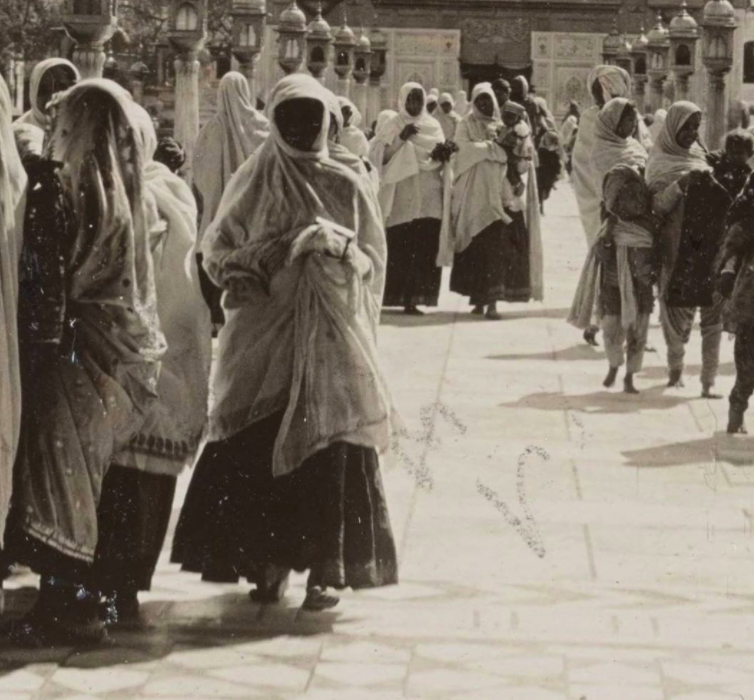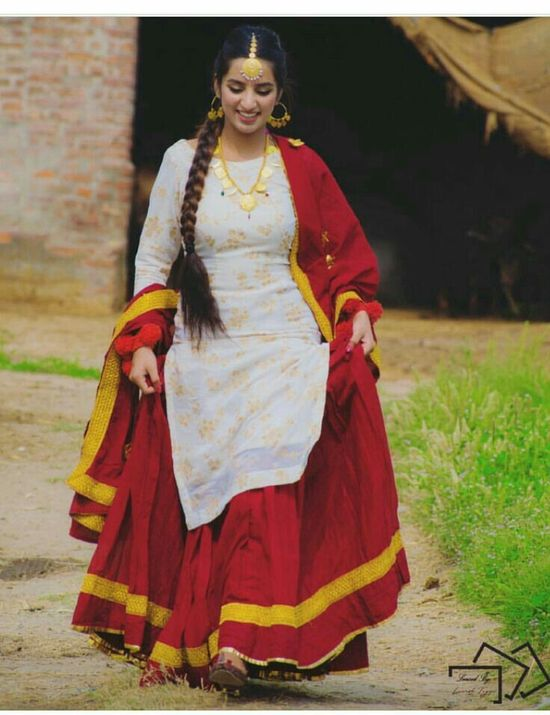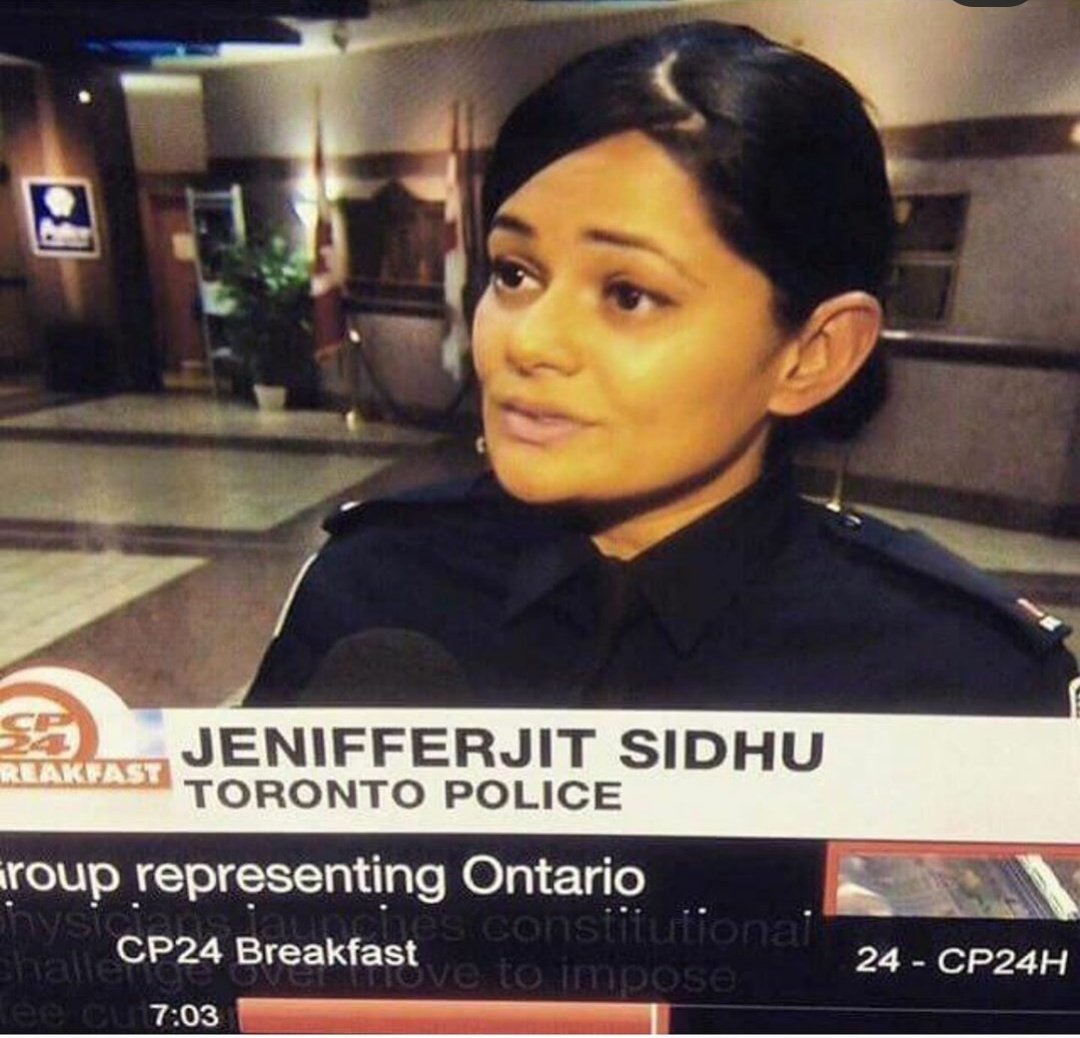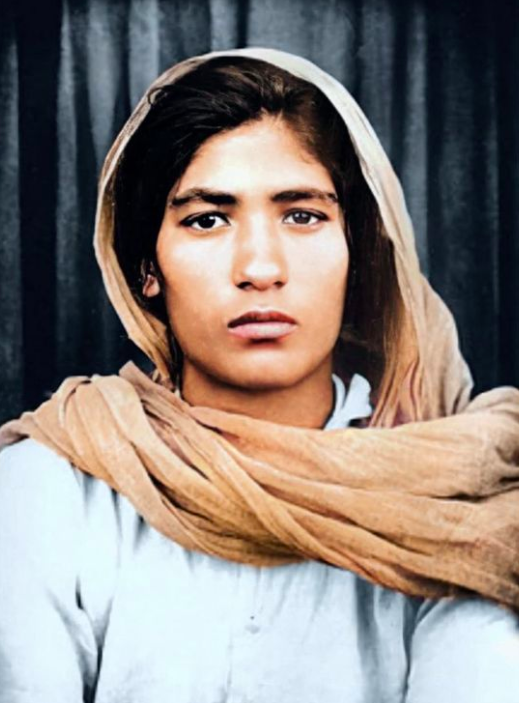
5aaban
Members-
Posts
466 -
Joined
-
Days Won
4
Content Type
Profiles
Calendar
Forums
Everything posted by 5aaban
-
The districts aren’t clearly defined but western usually refers to Moga, Barnala, Bathinda, Faridkot, Sri Muktsar Sahib and Mansa. These have a Sikh majority (between 70-82%). When you go towards eastern districts there is a big shift in Panjabi language. Eastern Districts are Rupanagar, Patiala, parts of Ludhiana, Fatehgarh Sahib, etc.
-
I never saw the film & stage style Bhangra done by common village people. In Panjab, Doaba was traditionally known for it's "Fankars" (artists). Pre-partition classical qawwali singers like Fateh Ali Khan (father of Nusrat Fateh Ali Khan) were also from Jalandhar. The genre of modern Bhangra music is associated with the British Panjabi diaspora (mainly from Doaba). Native Punjabi folk music was infused with rock and traditional instruments were replaced with western ones by British Panjabis.
-
Malwa's western districts tend to be more rural compared to other regions of Panjab. The region is also stronger in faith due to a large Sikh percentage. Pre-partition, it didn't have a high Muslim population.
-
-
-
Bhangra is popularly pushed as a "Panjabi Harvest Dance" by our own people. Here's an interesting read about Bhangra and how it was unknown in East Panjab. The crazy Bhangra performances at weddings or silly Bhangra moves on stage are a new invention. How Not to Dance Bhangra [Bazaar. London . Summer 1987] Bhangra isn’t a folk dance, but a spicy mixture of nine Punjabi folk dances – Dhamāl, Gidha, Jalli, Jhummar, Luddi, Pathania, Phumania, Sammi and Sialkoti bhangra B hangra performed in this country is not authentic; not to speak of the bhangra performed in Bombay films and youth festivals in East Punjab . Parbinder Singh, the captain of the Indian national team for almost ten years during the 70s once told me: “The bhangra is not at all a Punjabi folk dance. I’ve been to almost all the countries in the world and I was ashamed of the dance we performed. It isn’t a folk dance. You could call it something else – bhang’n roll, bhang disco.” Some years ago in the national competition held in Acton Town Hall , a Southall team even went further – they brought a huge aluminum sheet to give the effect of the Chenab river, to enthuse patriotic spirit a hangman’s noose was hung from the ceiling, muticoloured smoke effects were created. They won the trophy. East Punjabi teams have their own way. They enact scenes of wars with China and Pakistan . Maoists in Canada perform an inqlabi (revolutionary) bhangra – heads of Indian feudal lords, comprador bourgeoisie and leaders of two super powers roll on the stage. Bhangra as a harvest dance is unknown in East Punjab . The first ever public show was performed by one Manohar Deepak for visiting Russian leaders Bulganin and Khrushchev at Nangal in 1953. He took this dance to Bombay before it became a part of Indian Republic Day celebration floats. East Punjab State public relations department adopted it for its crude propaganda. Master Tara Singh, the Sikh Akali leader, called these cultural programmes as kanjral (pimp) shows, thus demonstrating his incapacity to comprehend cultural issues and the vulgar approach of the India state towards culture and arts. None of my acquaintances – young and old – ever saw bhangra performed in open fields. However, bāzigars (folk acrobats) beating drums during the wheat harvest used to be a common sight. The sickle moves faster and makes the work less tiresome. Disco-like bhangra, which is performed on Punjabi weddings by men and women together, is a recent thing. West Punjabi refugees brought this healthy tradition to East Punjab , otherwise sexually-mixed dance was unimaginable in pre-Partition days. It is heartening to note that in West Punjab bhangra has not been vulgarised. It is still performed in its pure form in two carnivals. People start making preparation three months ahead; sangs (groups) from different areas throng to Sakhi Sarwar on horses and camels. Men and women join hands and dance in circle; the drummer remains the hub of the choreography. Punjabi folklore has been introduced in post graduate curriculum in East Punjabi universities. Dr Nahar Singh is an authority on the subject. Once a bhangra dancer himself he says: Bhangra isn’t a folk dance, but a spicy mixture of nine Punjabi folk dances – Dhamāl, Gidha, Jalli, Jhummar, Luddi, Pathania, Phumania, Sammi and Sialkoti bhangra. Jhummar and Sammi are common dances and could be incorporated in bhangra, but Gidha, women’s dance, shouldn’t be jumbled with bhangra. Jhummar is basically a dance of slow movements; some of its movements can go with bhangra but in stages – i.e. from Sialkoti to Phumania and then Jhummar. But in modern bhangra Jhummar is given double beat, which looks like Punjabi women’s lamentation. In India bhangra is the only dance which does not reflect any aspect of the life of its origins – though its fast beat and evocation symbolise Punjabis’ chivalry, robustness and virility. The modern bhangra is nothing but reckless beating of drum and gymnastics. The British teams have also included gatka (sword playing). Needless to say all this is done to imitate cheap Bombay films. What is needed is a bhangra with the character of Punjabi heritage blended with new innovations in choreography and design. Silly gestures, spicy beats, unnecessary commentaries, vulgar songs and theatricality need to be discarded once for all. But who would face the music? https://apnaorg.com/articles/amarjit-26/
-
You're right, Majha has heavily contributed to Sikh history. However, only Tarn Taran Sahib has 93.33% Sikhs in Majha region. Amritsar is 68.94% Sikh and Gurdaspur district is only 43.64% Sikh. Malwa region's western districts also appear to be strongholds of Sikhs. Moga: 82.24% Barnala: 78.54% Mansa: 77.75% Faridkot: 76.08% Bathinda: 70.89% Sri Muktsar Sahib: 70.81% Doaba is a lost cause. Sikhs are only a majority in Kapurthala district (55.66%). Nawanshahr: 31.50% Jalandhar: 32.75% Hoshiarpur: 33.92%
-
Sikhs from Doaba are the most visible and dominant in the diaspora. Doaba is also known as the NRI Belt of Panjab. Doaba Sikhs are said to be less religious and Majha Sikhs as the most religious. However, Gurdaspur and Amritsar in Majha have the highest Christian percentages in Panjab, 7.68% and 2.18% respectively. Doaba is is also dominated by Hindus and Sikhs are outnumbered in Nawansheher, Jalandhar and Hoshiarpur districts. Sikhs are more dominant in Malwa districts such as Moga, Barnala, Mansa, Faridkot, Fatehgarh Sahib and Sri Muktsar Sahib. District with the highest Sikh percentage from each region (as of last Indian census) Majha: Tarn Taran Sahib 93.33% Sikh Malwa: Moga 82.24% Sikh Doaba: Kapurthala, 55.66% Sikh
-
A Question About Skirts/dresses
5aaban replied to harsimran kaur's topic in GURBANI | SAKHIAN | HISTORY
Yes the second one is just dressing up -
A Question About Skirts/dresses
5aaban replied to harsimran kaur's topic in GURBANI | SAKHIAN | HISTORY
The first picture looks humble because women in those times used big 'chadors' to cover themselves up before stepping out which was often plain white (silk, khadi or lattha depending on one's wealth). However, other Dupatta's worn by Sikh women during the time had decorative seams, Banarasi laces, and crochet work or Phulkari embroidery done at home. The ornaments worn in the modern photo are also of old Punjabi design which were worn by women in the 19th and early 20th century. -
A Question About Skirts/dresses
5aaban replied to harsimran kaur's topic in GURBANI | SAKHIAN | HISTORY
Sikh women have historically worn the 'Ghagra' (over their Salwars) as part of traditional Punjabi attire. It's like a flowy maxi skirt so it doesn't show the body shape and covers the legs too. Sikh women at Sri Harmandir Sahib, early 20th century Modern day Punjabi Ghagra -
Many Sikh women have nose piercings and wear a pin because of Panjabi tradition. It's quite common in Panjab too, especially among old women. But yeah nothing crazy like tongue piercings.
-
I came across them on the Instagram of Davinder Toor. The artistic style is good. It gives insight into the people of 19th century Punjab and the way they dress.
-
Life term for son who killed dad with cricket bat
5aaban replied to Premi5's topic in POLITICS | LIFESTYLE
I heard somewhere that Panjabis gave their dogs English names (Tommy, Johnny etc) because of hate towards the British Raj. -
Life term for son who killed dad with cricket bat
5aaban replied to Premi5's topic in POLITICS | LIFESTYLE
How did Amerjit become Bobby! I used to think Bollywood gave Sikh/Punjabi characters funny names to make a joke out of the quom but then I met real Shampy's, Happy's and Pinky's. -
Life term for son who killed dad with cricket bat
5aaban replied to Premi5's topic in POLITICS | LIFESTYLE
I've heard of a 'Bob Singh'. -
Life term for son who killed dad with cricket bat
5aaban replied to Premi5's topic in POLITICS | LIFESTYLE
I don't know why Sikhs these days have to keep these names when we have so many beautiful names to pick from. -
I think these names are great. Far better than the Lovepreet's, Lovejeet’s and Loveleen’s we have around today.
-
sikh women Why are Sikh women always blamed for converting when Sikh men also do it
5aaban replied to a topic in GUPT FORUM
-
Angad is also the name of the second Guru
-
I made a list of some names based off historical Sikhs such as the Chali Mukte and Sikh royalty. Some of these names can be used for both girls and boys. The names are derived from Sanskrit and Persian, some also have their own Punjabi touch to it. Male Jagat, Tarsem, Tegh, Hamir, Hari, Mangal, Baghel, Gurbaksh, Mehar, Naudh, Jujhar, Shabeg, Pargat, Beant, Mokham, Jagir, Zorawar, Santokh, Bakshish, Nihal, Fateh, Dilbagh, Mann, Nidhan, Bhag, Dyal, Khushal, Tara, Gulab, Karam, Gurdas, Kirt, Joga, Mahan, Sumer, Sultan, Phula, Lachman, Nirmal, Duleep, Ishar, Jassa, Badar, Arjan, Jai, Kapur, Angad, Jawahar, Bhagat, Udham, Kartar, Tahil, Randhir, Chet, Roshan Female Sada, Kaulan, Jeevan, Raj, Jind, Chand, Mahtab, Bhani, Bakht, Datar, Desan, Sunder, Lali, Amar, Roop, Gulab, Upkar, Dalair
-
I agree with wearing modest clothing.
-
Are Sikhs allowed to wear jewellery? Many photos and art show Sikhs from the 19th and early 20th century wearing jewellery so why is it discouraged today?
-
.




